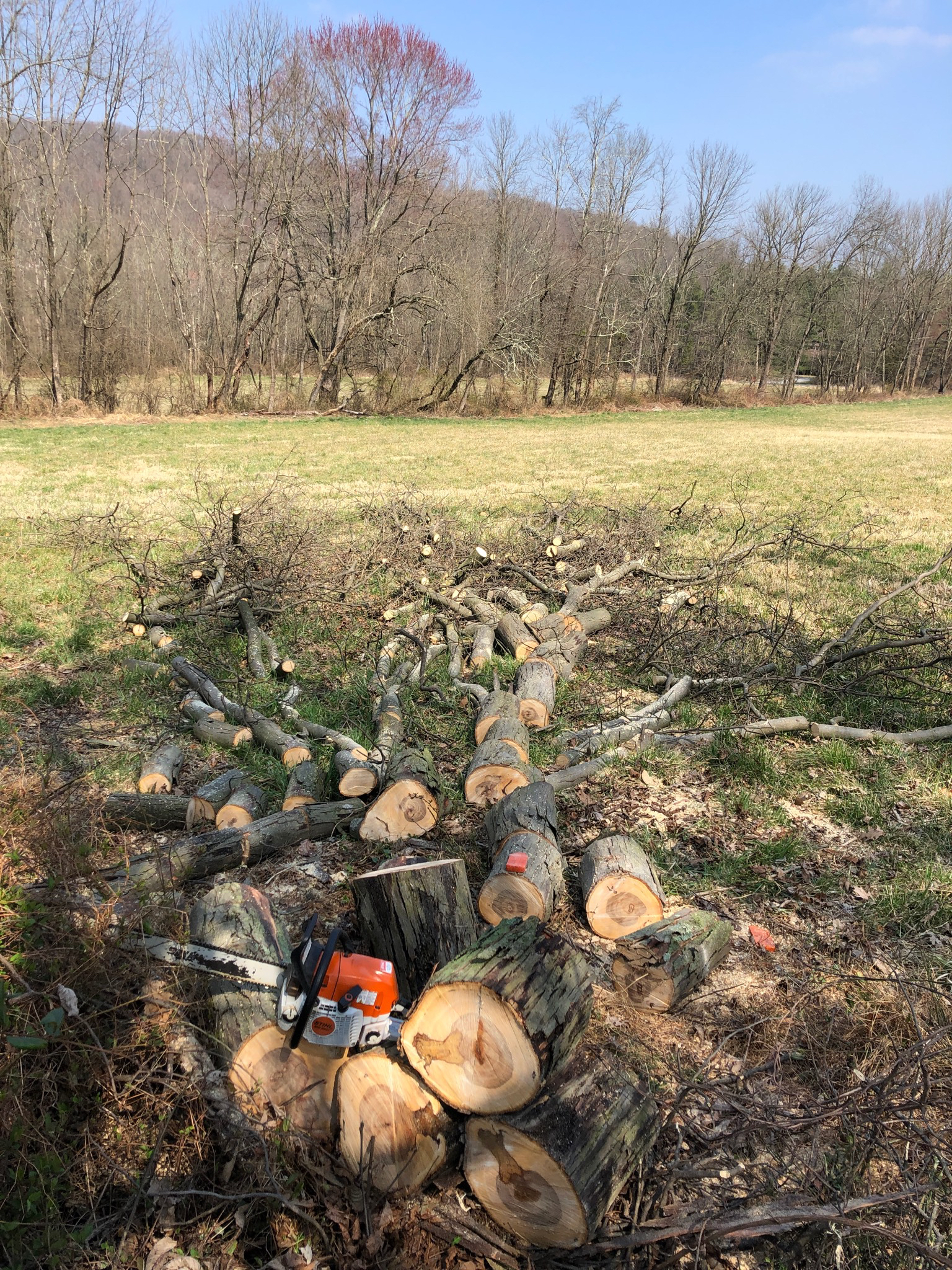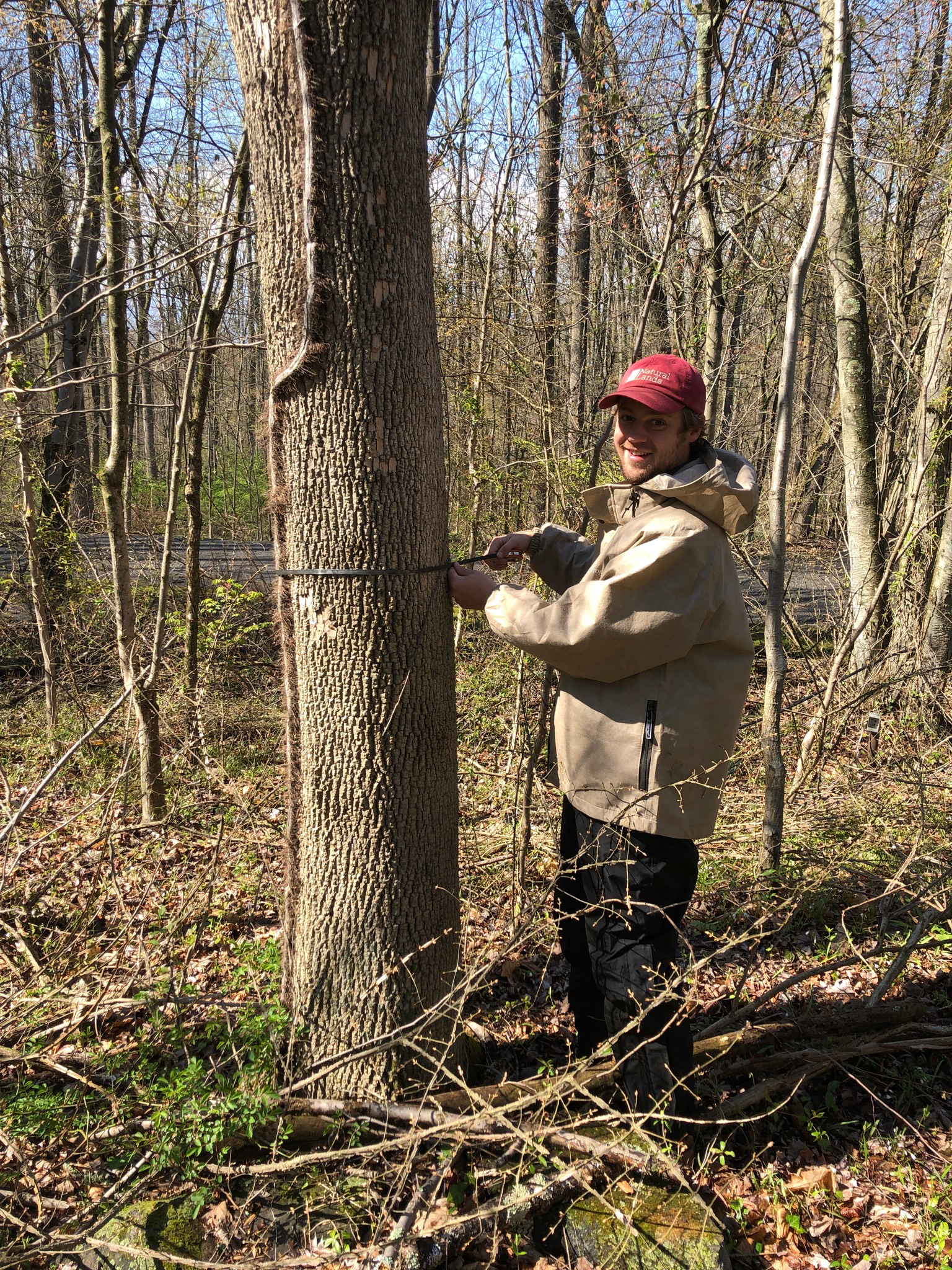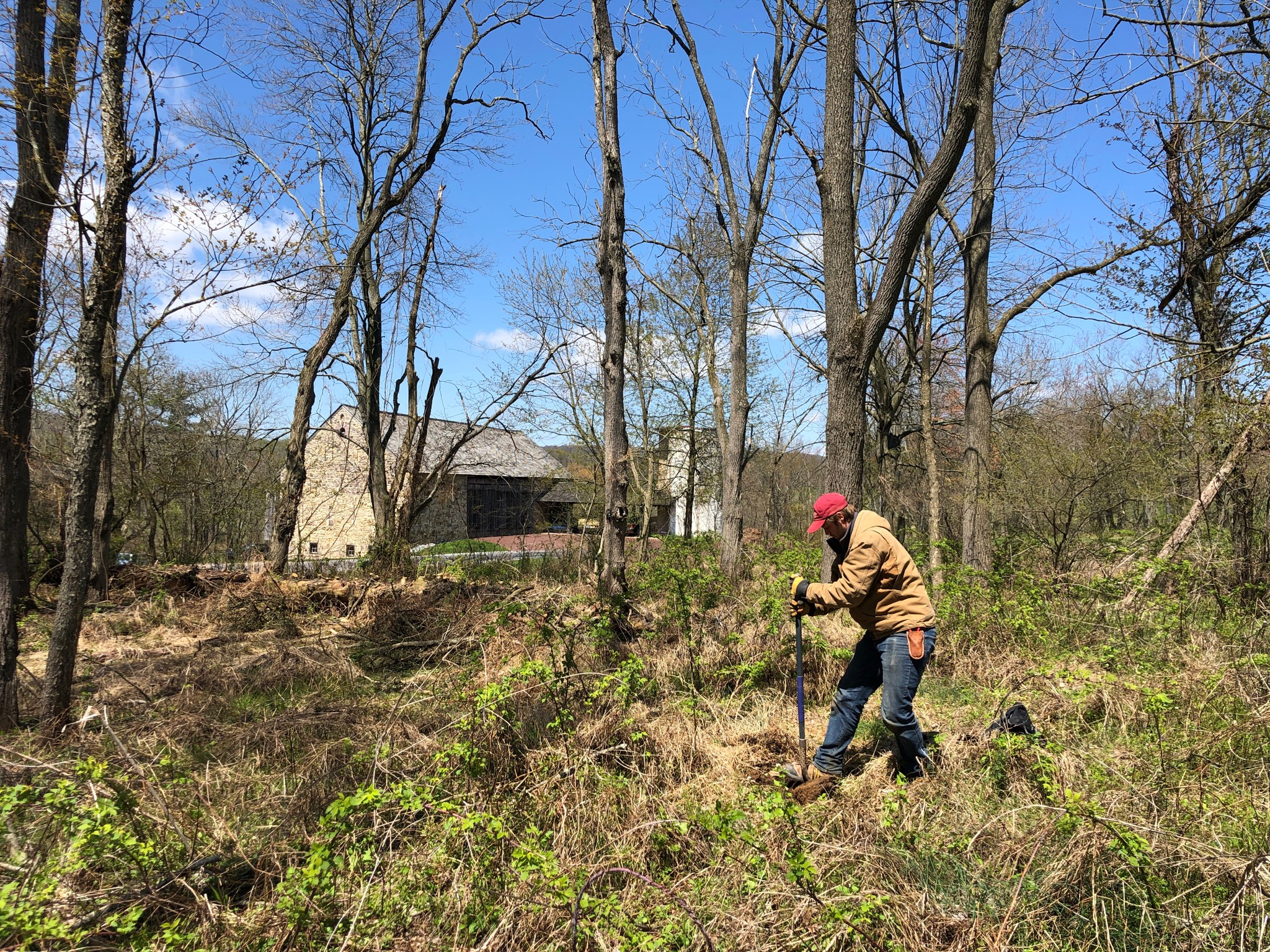Crow’s Nest: Spring projects
By Daniel Barringer, Preserve Manager.
Happy Earth Day, everybody! As you might guess from my dearth of recent weblog posts we’ve been super busy here at Crow’s Nest. We’ve been short-staffed, we cancelled all of our group volunteer events, but we are fortunate to be able to continue working outdoors separately, and using separate equipment and (personal) vehicles. All of the usual spring projects are underway, and we’ve also enjoyed a five- to ten-fold (weekdays/weekends with good weather) increase in visitation. The preserve remains open to visitors provided they maintain social distance. However, the visitor center and restrooms are closed until further notice.
We’ve been thrilled to see so many new people though now we know where the weak spots are in our directional signage. Many people have gotten lost, a problem made worse because we took away the trail maps to prevent touching common surfaces. We offer two suggestions: take a photo of the map at the kiosk before you go, or better yet, download to your smartphone the Natural Lands app which shows your progress as you move about our trails.

We obviously didn’t hold any prescribed burns this spring, since that is a group activity that requires staff to travel and work together. Each of the meadows that was to have been burned has now been mowed instead; we’ll push back the burn schedule one year.

We cleaned up some trees that fell over the winter in farm fields (above), and collected data on ash trees that are dying from emerald ash borer so that we can schedule their removal. Bummer of a subject for Earth Day, though. Below, Alec is measuring the size of the tree so that we can identify each individual as we remove it. You can bet that DBH tape is contaminated with poison ivy.

We have piles of branches in various places on the preserve that are the result of hazard tree removals and invasive plant management that I’ve been meaning to chip for a while. The brush piles provide temporary habitat, but if they’re left there for a few seasons they become difficult to manage as invasive vines and multiflora rose grow up through them. So we chip them, and start new ones. Here I towed the chipper with the tractor so that I wouldn’t get stuck.

These photos don’t show it, but we’ve reached the time of year where the color of new growth is something we won’t see anywhere else or at any other time. It’s glorious.

It’s not all tree removal though. In addition to the recently-completed stream restoration planting we have also been planting trees around the preserve. Above, Alec plants a redbud to fill in the understory of this forest patch.
To improve the experience of all visitors to the preserve, we took the worst section of the Creek Trail, pumped it dry, and added several cubic yards of wood chips. This is to encourage people to stay on the trail, rather than trying to go around the muddy section and create their own parallel trails and crushing the wildflowers. This section had previously been amended with gravel, so hikers who stayed to the middle only had to walk in very shallow (2 – 3″) of water on a firm surface with good traction. By going around the water, hikers were slipping and sliding in deep mud. The wood chips are not a long-term solution—as they break down they become more mud—but they’re free (see ash tree removals and chipping projects, above) and will serve until we can get more gravel down there.

Since we don’t have programs going on you will find lots of online resources. Check the Crow’s Nest Facebook page that Molly is keeping up to date, and check out Outdoors Online for “Nature at Nine,” “Office Hours with Nature,” and other activities that you can do from home. Be well!
